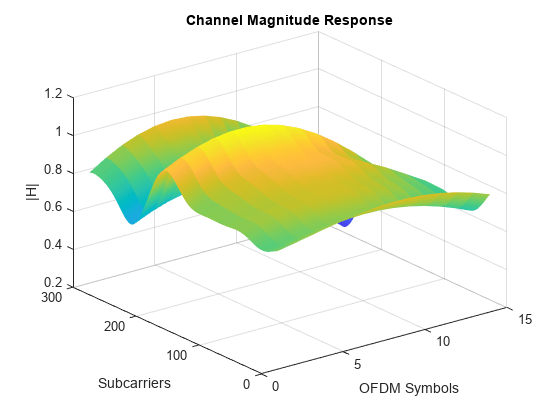nrPerfectChannelEstimate
Perfect channel estimation
Syntax
Description
h = nrPerfectChannelEstimate(carrier,pathGains,pathFilters)pathGains and the path filter
impulse response pathFilters. The function then performs orthogonal
frequency division multiplexing (OFDM) demodulation. carrier specifies
the parameters for the OFDM demodulation.
h = nrPerfectChannelEstimate(pathGains,pathFilters,nrb,scs,initialNSlot)nrb number of resource blocks with
subcarrier spacing scs and initial slot number
initialNSlot.
h = nrPerfectChannelEstimate(___,toffset,sampleTimes)
h = nrPerfectChannelEstimate(___,Name,Value)
Note
The function limits the timing offset to the CP length. To synchronize the channel
impulse response to the start of the useful part of the OFDM symbols when the
toffset input exceeds the specified CP length
(cpl, CyclicPrefix, or
carrier.CyclicPrefix), the function shortens
the specified path filter impulse response, pathFilters.
Examples
Input Arguments
Name-Value Arguments
Output Arguments
References
[1] 3GPP TS 38.211. “NR; Physical channels and modulation.” 3rd Generation Partnership Project; Technical Specification Group Radio Access Network.


